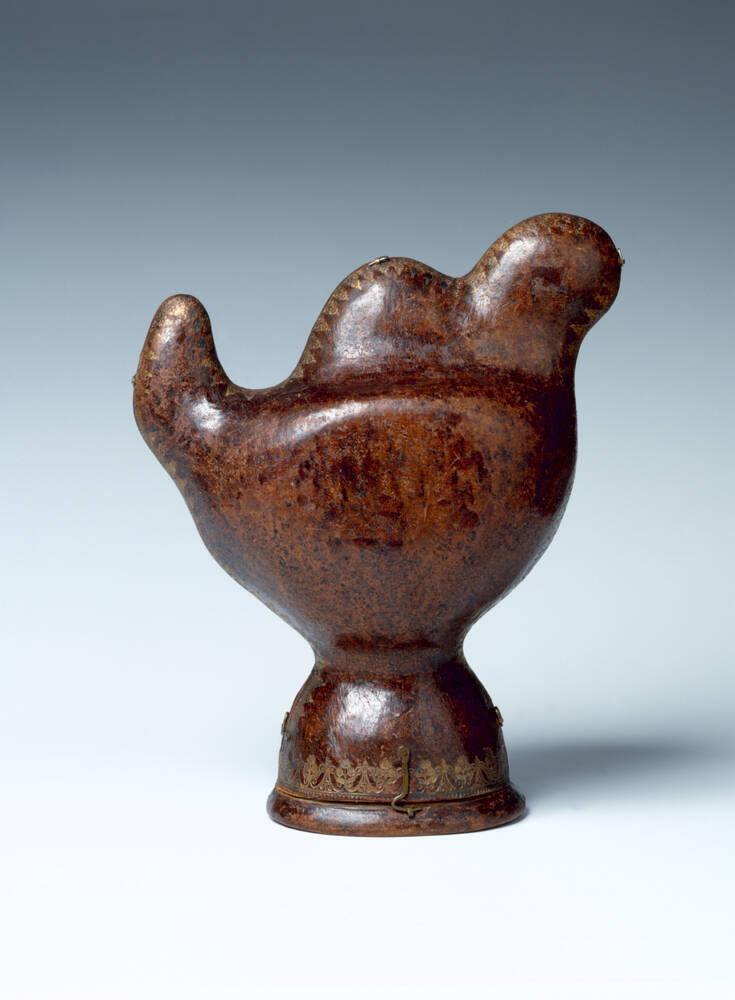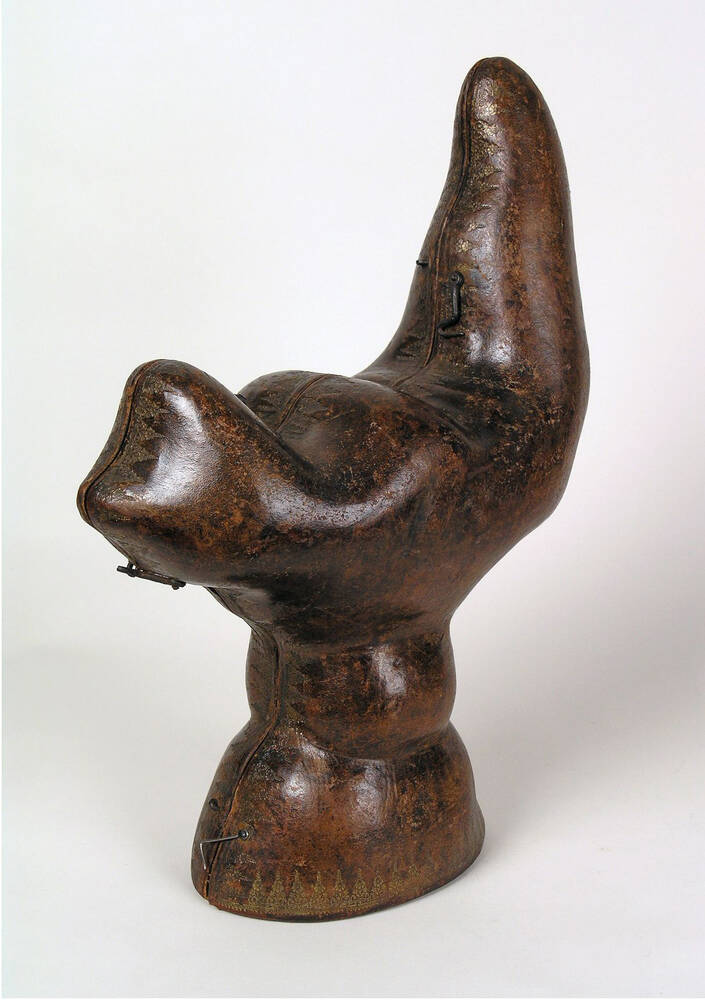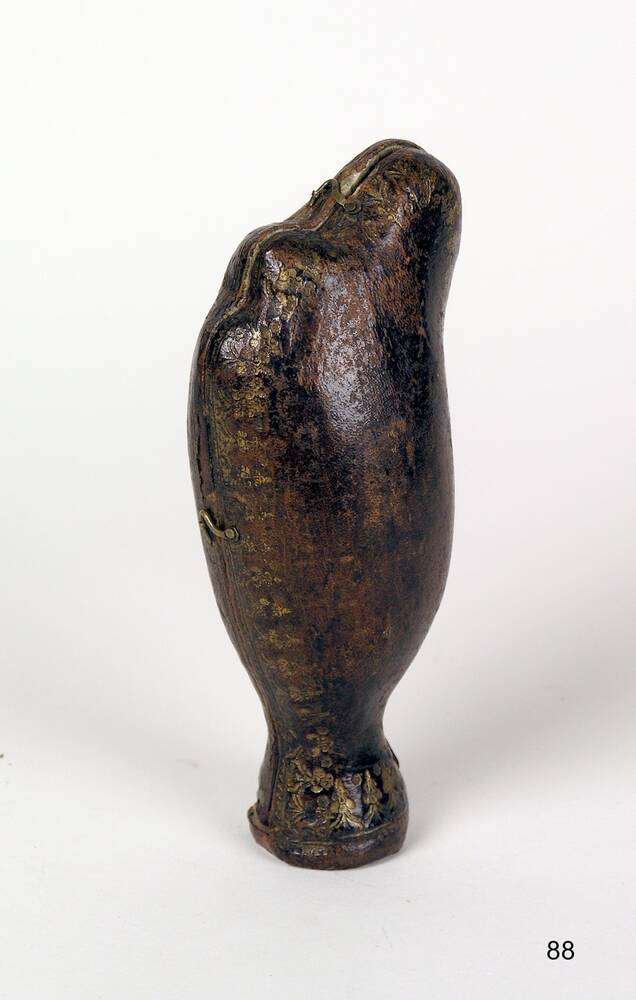They look like modern sculptures, but they are actually cases for transporting valuable collectors’ items. It’s fun to try and guess what they might have contained. Look at the large open case. It was made to transport Dinglinger’s decorative bowl depicting Diana bathing – the bowl that seems to float above the stag’s antlers, in the previous room. It has the number 48.
Why, you might ask, were cases like this necessary, in the first place? Well, many masterpieces from the Green Vault were transported between August the Strong’s two courts – one in Dresden, one in Warsaw – and had to be securely packed. You can imagine what the roads were like in the eighteenth century. These treasures had a very bumpy ride in horse-drawn carriages.
The cases were made of light wood, and shaped like the works they contained. They were covered in leather, which was then embossed in gold – sometimes as extravagantly as a valuable book cover. In the seventeenth and eighteenth centuries, red and brown calf’s leather was especially popular. Inside, they were padded, and lined with silk or suede. Over the centuries these cases gathered a patina of inventory numbers and embossed descriptions.
Some of the cases were supplied with the item when it was purchased. Others were made later, here in Dresden. Before August the Strong left for his coronation in Poland, he ordered a large number of travelling cases for various treasures.




